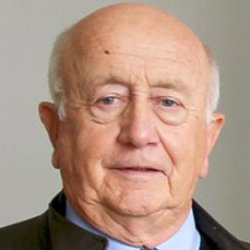Vale sovereignty "Combined Intelligence Centre - Australia"
August 7, 2023
In his recent comprehensive P&I article ( Abandoned sovereignty: Australias intelligence function colonised by US__) Mike Scrafton has raised serious concerns about Defence Minister Marles announcement at the recent AUSMIN talks of the creation of Combined Intelligence Centre Australia within our Defence Intelligence Organisation (DIO) by 2024.
Details of how this extraordinary joint Australian-US unit can be located within DIO and yet retain a formal connection with the appropriate US administration have yet to be revealed. As Scrafton points out, nor is it readily apparent why such a joint unit was needed given the way the multiple intelligence organisations of both countries are already so firmly joined at the hip with product and staff exchanges.
Not surprisingly this has led to growing speculation about what lies behind it all. In his remarks to the Australian media, Marles has acknowledged the deep intelligence ties and the large amount of information shared between the two countries. He characterised it as a “significant step forward” towards “seamless” intelligence ties. And went on to claim that it will
enable us to do joint work and you will then see more joint [intelligence]products coming out of thisThis is a unit which is going to produce intelligence for both of our defence forces and I think that’s important."
And then added bemusingly :
Youll get an American perspective into the American system seen from Australia. And that is not insignificant.
Again, hardly surprisingly, most speculation has been about the facility this unit will offer to work in the reverse direction i.e. getting an American perspective into the Australian system! It is difficult to see how the unit will provide the US with much more additional information than it receives already from Australian sources. But seemingly it will allow the Americans more scope to influence the content and tenor of information being provided to Marles and senior Government ministers and run the risk of policy induced intelligence affecting the Governments strategic decision making. A rerun of WMD and Iraq. Although Marles has sought to deny it, there has also been some media reporting suggesting that a more specific reason for US interest in the new arrangement arose from their concern about the failure of Australian intelligence coverage of the Chinese movement into the South Pacific. The media have also reported American sources as asserting that the main target of the new unit is to be China.
Another puzzling aspect has been the management of the announcement of the initiative. Why did the move have to be handled by megaphone ? Could it not have been carried out by the secondment of a couple of Americans from the DIA to DIO as all other such exchanges have been managed for years without all the hoopla of yet another formal organisational change? And then for Marles to so proudly boast that it will produce an even more seamless subservience of Australian strategic policy to the US dictum than already exists!
How all of this will now sync with whatever China policy Prime Minister Albanese is trying to conceptualise is well beyond puzzling. Closer intelligence cooperation with the US in itself may not have fussed China even when Albanese is trying to stabilise that sensitive bilateral relationship. But for Marles to announce it on a podium alongside Secretaries Blinken, Austin and a chorus of senior US Military in Australia all in full anti-China throat is beyond perplexing. And shreds much of the policy direction which Foreign Minister Wong has been so assiduously trying to project with some encouraging success as China has illustrated by its exquisite timing of the welcome breakthrough on our barley exports. It also comes , of course, right in the middle of Albaneses hesitating about accepting his invitation to visit Beijing later in the year.
Another important announcement at AUSMIN was on the US agreement to offshoring some of its missile manufacture to Australia - presumably to accelerate our own acquisition of a variety of missile systems as well as supplementing the global supply chain. Once again, we will need to be very sensitive to the legitimate concerns of our neighbours about any porcupine or echidna defence systems we decide to instal along our northern borders. The types of missiles usually mentioned have only limited range barely able to reach Timor or PNG and seas around them. Any Australian attempt to use such missiles against threatening aircraft or ships would inevitably risk damage to those areas as well as incur unwitting but consequential involvement for these countries in military conflict. Should we move to consideration of longer range missiles for defence from or attack on the most named potential enemy of China its response would entail missile transit in both directions over these same countries and much more serious military challenges. These potential consequences must be given the fullest consideration in any decision making on these issues to avoid the serious problem the lack of proper consultation with our neighbours in ASEAN over AUKUS.

